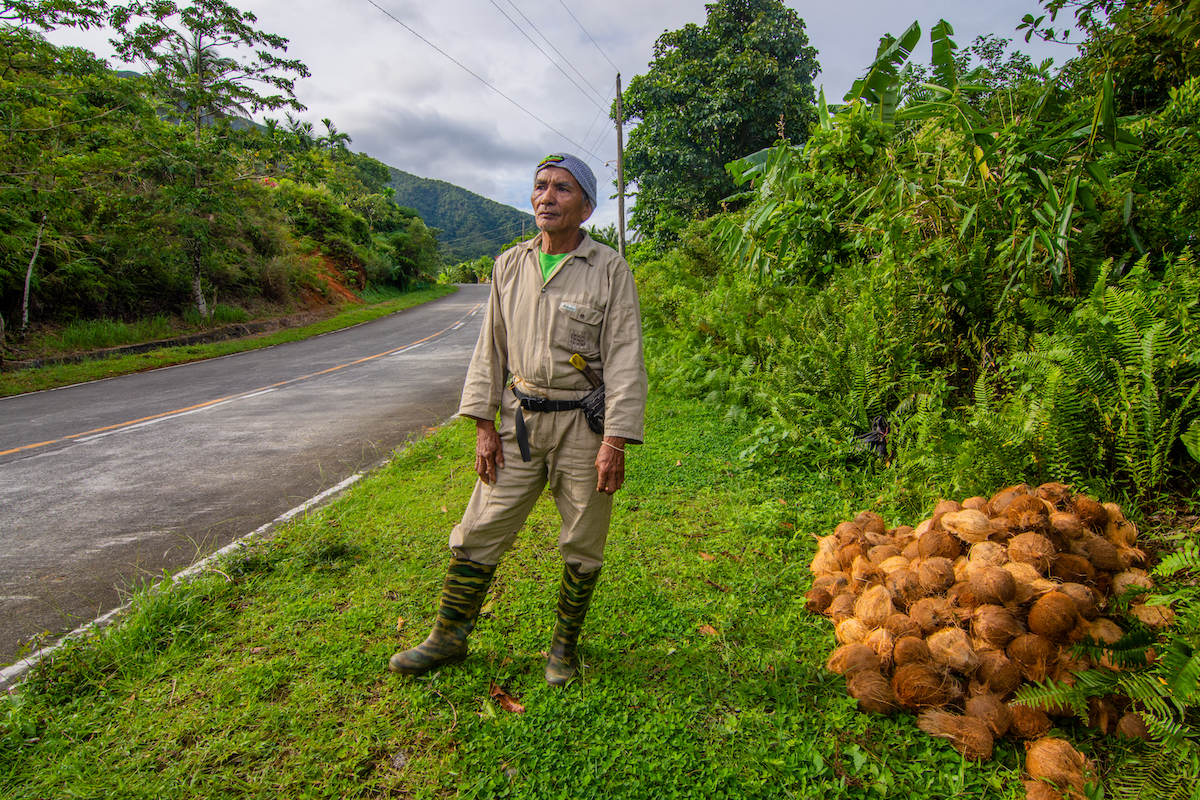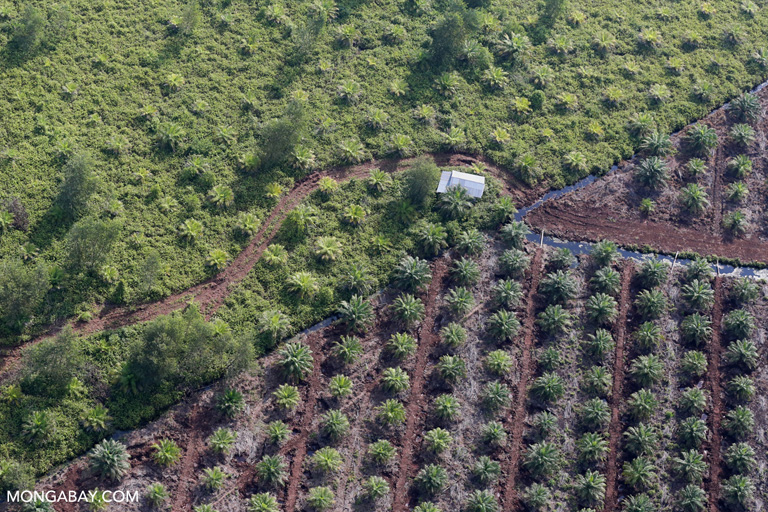- Indonesia and the Philippines account for most of the world’s coconut production. But as the palm oil industry expands, helped along by generous government subsidies, coconut farmers are struggling to adapt.
- In 2010, palm oil overtook coconut oil as the top-selling oil in most Philippine grocery stores. Most of it was imported from Indonesia or Malaysia, but now the Philippines is trying increase its own production.
- Oil palm is a much more industrialized crop than coconut, which is dominated by smallholders. But while the low price of palm oil has given it an advantage, demand has risen for high-quality coconut products due to health and sustainability concerns.
- Some coconut farmers say they need the same kind of support from the government that palm oil companies get if they are going to survive.
GENERAL NAKAR, Philippines — Lucio Tena, 64, has been growing coconuts on his 20-hectare (49-acre) farm in General Nakar, on the east coast of the Philippine island of Luzon, for more than four decades. But the situation facing farmers like him today is the worst he’s experienced in his lifetime.
“The price is dead low at present,” Tena said in November, in the entryway of the three-room wooden home he shares with his wife. “It’s not enough to meet our daily needs.”
Tena is not alone. Coconut farmers are facing serious challenges across Southeast Asia, primarily due to low prices. A ton of coconut oil, the most widely produced coconut byproduct, was selling for $836 a ton in November, less than half of what it was two years earlier.
In General Nakar, that means less than 15 Philippine pesos (30 U.S. cents) for a kilogram of copra, the dried kernel of the coconut from which coconut oil is made, or 7 pesos for a whole nut, the price Tena has been selling his coconuts.
“A lot of people in the Philippines depend on coconut farming as a livelihood,” he said. “We are all hoping for a better future, to lift ourselves from poverty.”

There are more than 3.5 million smallholder coconut farmers like Tena in the Philippines, the world’s top exporter of coconuts, and an additional 4 million in Indonesia, which ranks second. The two countries account for nearly 60% of global coconut production by land area. As in the rest of the world, these coconut farms are managed almost entirely by smallholders.
In both countries, farmers are struggling due to low prices, lack of assistance from governments, and competition from another product: palm oil. That edible oil has been heavily promoted and subsidized by the government in Indonesia, Malaysia — which are together responsible for most of the world’s palm oil production — and, increasingly, the Philippines. Palm oil has flooded Southeast Asian markets and, due to its lower price, has replaced coconut oil, the traditional choice, in kitchens across the region.
“Some coconut farmers are just letting the coconuts grow in their land instead of processing them,” said Jun Pascua, director of Pambansang Katipunan ng Makabayang Mambubukid (National Peasants Movement), a Philippine association that represents farmers. Others, he adds, are selling their land to oil palm growers, as the country aims to expand domestic production of the crop.






